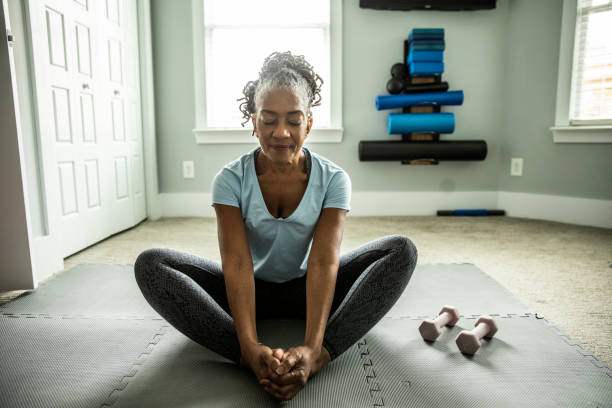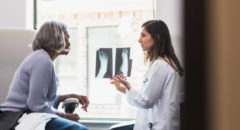
Osteoporosis is a common condition that affects millions of women worldwide, particularly during and after menopause. It is characterized by weakened bones, making them more prone to fractures. As women age and estrogen levels decline during menopause, the risk of osteoporosis significantly increases. This article will provide an overview of osteoporosis, explain why menopausal women are at a higher risk, and offer practical tips for prevention and management.
What is Osteoporosis?
Osteoporosis is a bone disease that occurs when the body loses too much bone mass or makes too little bone. This results in bones becoming fragile, weak, and more susceptible to fractures. The most common fracture sites include the hips, spine, and wrists. Since bones are living tissues that constantly regenerate, maintaining a healthy balance of bone formation and breakdown is crucial. When this balance is disrupted, bones lose density and strength.
Symptoms of Osteoporosis
Osteoporosis is often called the “silent disease” because it typically progresses without noticeable symptoms until a bone fracture occurs. However, some warning signs may include:
- Loss of height over time
- Back pain caused by fractured or collapsed vertebrae
- A stooped posture (kyphosis)
- Bone fractures that occur more easily than expected
Why Are Menopausal Women at Higher Risk?
Estrogen, a hormone that helps maintain bone density, plays a critical role in protecting bone health. During menopause, estrogen levels drop sharply, accelerating bone loss. In fact, women can lose up to 20% of their bone density in the first five to seven years after menopause. This loss of bone mass increases the risk of developing osteoporosis. Other risk factors that may compound this include:
- Age: The older you are, the greater the risk.
- Genetics: Family history of osteoporosis can predispose individuals.
- Body Type: Thin or small-boned women tend to be more susceptible.
- Lifestyle Factors: Smoking, excessive alcohol consumption, and a sedentary lifestyle increase the risk.
- Dietary Deficiencies: Inadequate calcium and vitamin D intake can contribute to bone loss.
Tips for Preventing Osteoporosis in Menopausal Women
Although osteoporosis is more common in menopausal women, it is not inevitable. There are several steps women can take to strengthen their bones and reduce the risk of osteoporosis:
1. Boost Calcium Intake
Calcium is vital for bone health. Women over 50 should aim for at least 1,200 mg of calcium per day. Good dietary sources include:
- Dairy products like milk, yogurt, and cheese
- Leafy green vegetables such as kale and broccoli
- Fortified foods like cereals and orange juice
- Almonds, tofu, and sardines
If it’s difficult to get enough calcium through food alone, consider taking a calcium supplement after consulting with a healthcare provider.
2. Ensure Adequate Vitamin D
Vitamin D helps the body absorb calcium and plays a critical role in maintaining bone health. Sunlight exposure is one of the best natural sources of vitamin D. However, menopausal women may also need supplements or fortified foods, especially in areas with limited sunlight. The recommended daily intake of vitamin D for women over 50 is 800 to 1,000 IU (International Units).
3. Incorporate Weight-Bearing Exercises
Physical activity, especially weight-bearing and strength-training exercises, can help maintain bone density and improve muscle strength, balance, and coordination. These exercises include:
- Walking, jogging, or hiking
- Dancing or aerobics
- Resistance training using weights or resistance bands
- Yoga or Pilates for flexibility and balance
Regular exercise reduces the risk of falls and fractures by improving muscle mass and coordination.
4. Quit Smoking and Limit Alcohol Consumption
Smoking accelerates bone loss, while excessive alcohol can interfere with the body’s ability to absorb calcium. Quitting smoking and limiting alcohol intake to no more than one drink per day for women can significantly lower the risk of osteoporosis.
5. Maintain a Healthy Weight
Both underweight and overweight individuals are at risk for bone fractures. Being underweight may lead to a decrease in bone mass, while excess weight can increase the risk of falls and fractures. Aim to maintain a healthy weight through a balanced diet and regular exercise.
6. Consider Hormone Replacement Therapy (HRT)
Hormone replacement therapy (HRT) may help prevent bone loss by replacing the estrogen lost during menopause. However, HRT is not suitable for everyone and carries potential risks, such as an increased likelihood of blood clots, breast cancer, or stroke. Discuss with a healthcare provider whether HRT is right for you.
7. Monitor Bone Density
Regular bone density tests (DEXA scans) are recommended for women over 65, or younger women at high risk. These tests measure the density of your bones and can help assess the likelihood of fractures, allowing for early intervention if necessary.
8. Take Medication if Necessary
In cases where lifestyle changes aren’t enough to prevent bone loss, medications such as bisphosphonates, denosumab, or selective estrogen receptor modulators (SERMs) may be prescribed to slow bone loss and reduce the risk of fractures. Consult a healthcare provider for advice on the best course of action.
Conclusion
Osteoporosis is a serious health concern for menopausal women, but it can be prevented or managed with the right strategies. By focusing on nutrition, exercise, lifestyle changes, and regular medical check-ups, women can significantly reduce their risk of fractures and maintain healthy bones as they age. Staying proactive about bone health is crucial to ensuring a better quality of life during and after menopause.







